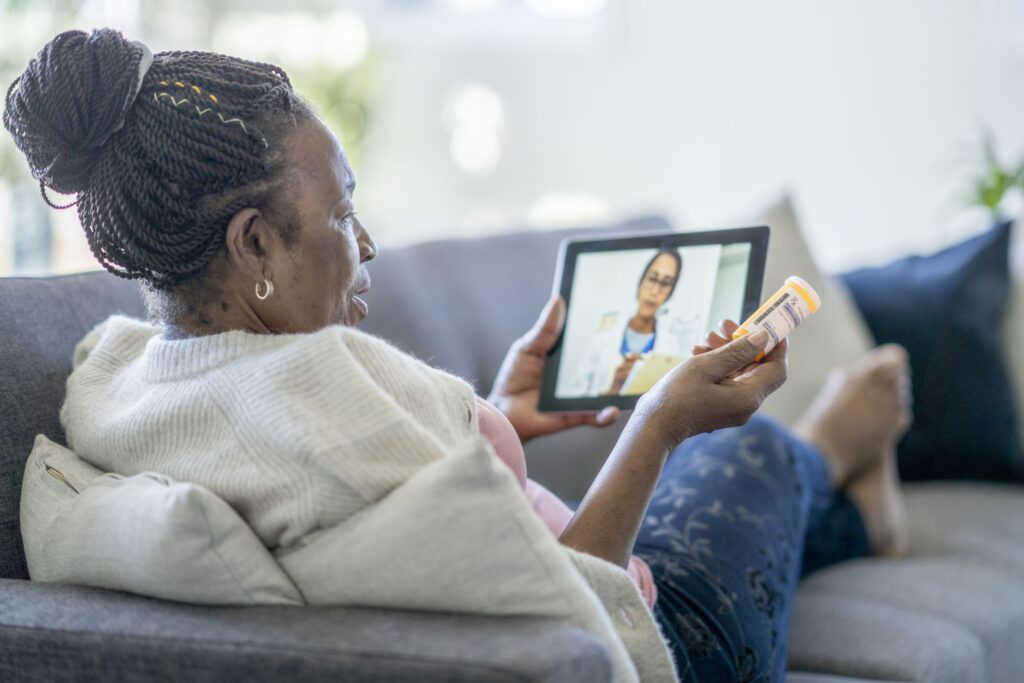Telehealth and virtual care solutions have quickly become a staple of modern healthcare. We’ve put together this helpful overview of key statistics and even included a telehealth infographic so you can have this information at a glance.
While telehealth solutions have been around for over a decade, they underwent a rapid ascension in response to the social distancing requirements of the COVID-19 pandemic a 2021 study found that some 40% of Americans have used telehealth services, with the vast majority doing so since the start of the pandemic.
The number of patients engaging with telemedicine has surely grown since then, and all indications are that telehealth’s newfound prominence is here to stay remote care is simply too convenient for patients and providers alike to give up its place in the healthcare landscape and can impact patient retention.
Of course, such a rapid rise in popularity is sure to come with many questions from would-be adopters. With that in mind, we thought it would be helpful to provide statistic-based answers to some of the most common questions surrounding telehealth.

Common Questions About Telehealth
It’s important for physicians to understand the many benefits telehealth provides to both their patients and their practices. While each practice, and indeed each patient/doctor interaction, will have its own unique variables, we’ve gathered together five of the most frequently asked questions around virtual care and answered them with some statistics that every physician needs to know.
Do patients really want to be seen virtually?
Yes. While social distancing helped bring telemedicine to prominence, it’s introduced conveniences that patients don’t want to give up. Patients like not only the flexibility of care, and find that they don’t have to sacrifice quality to get it 90% of patients rate their telehealth experience as positive.
Some patients will always prefer to be seen in person and some doctor/patient interactions simply can’t be conducted virtually, but having the option of telemedicine appointments will be greatly appreciated by a large portion of your client base.
Is telehealth too expensive to add to my practice?
No. Telehealth solutions used to be prohibitively expensive for all but the biggest healthcare providers, but that’s no longer the case. Today, you can find scalable solutions that grow to meet your needs and your budget.
Choosing such solutions will give your practice the tools and resources they need without forcing you to pay for the ones you don’t. It should also be easy to add new features and capabilities as you need them.

Will older patients be comfortable with telehealth?
Yes. In fact, a majority of Americans age 65+ are willing to use telemedicine solutions. And remember that these will supplement not replace in-person healthcare appointments. Patients who aren’t comfortable with virtual care shouldn’t be required to make use of it.
However, your practice may find that some of these patients will be receptive to coaching on telehealth practices and grow more comfortable with them over time. Encourage your patients to try your new telehealth offerings, and you may just be surprised at how quickly they adapt to them.
How long do telehealth solutions take to get up and running?
This is another area where rapid advancements have been made. A complete telemedicine solution no longer requires long startup times; instead, it comes as out-of-the-box software that can be implemented within 30 days.
It’s important to note that, unlike many communications systems, a good telemedicine solution won’t require any special hardware installation or software downloads for you or your patients.
Will I get reimbursed for telehealth services?
Reimbursement policies vary by state, and you can find your state’s specific policies at the Center for Connected Health Policy. As lawmakers adapt to the new prevalence of telehealth, there are many new laws pending legislation that suggest a bright future for telehealth reimbursement policies.
In the meantime, some providers have had positive results charging additional fees for telehealth consultations to help cover the gap in reimbursement. All 50 states and Washington, DC, currently reimburse live video consultations in Medicaid fee-for-service.
Telehealth Infographic Covering All the Statistics

Finding a Telehealth Solution That’s Right for You
Updox makes convenient virtual care possible through a comprehensive communications platform for your practice. You and your patients will enjoy the accessibility and ease of use that comes from our HIPAA-compliant text and video chat solutions and the ability to connect for telemedicine appointments from anywhere.
“We needed to see patients but didn’t want them to come and sit in waiting areas or exam rooms. We knew patients needed us. We had to figure it out quickly. We already had a partnership with Updox and knew of their Telehealth solution so it was a great fit for our practice. With Updox, we were able to get started with Telehealth in just days.” -Phil Boucher, MDLincoln Pediatrics




